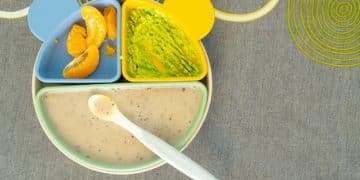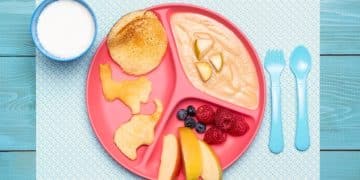Quick & Easy Meal Prep for Toddlers: 7 Recipes in 30 Minutes
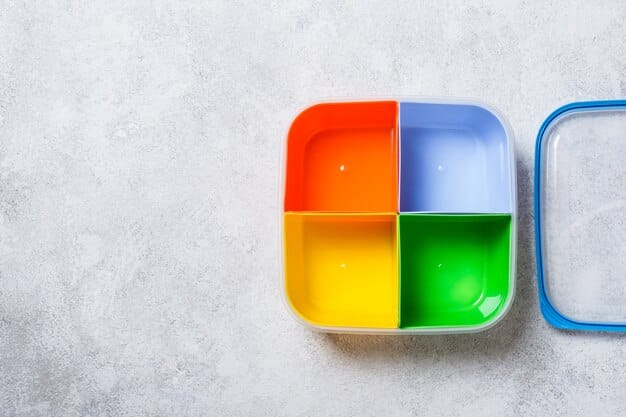
Meal prep for toddlers doesn’t have to be daunting; this article provides seven quick and easy recipes you can prepare in under 30 minutes, ensuring your little one gets nutritious and delicious meals without spending hours in the kitchen.
Juggling work, family, and everything else in between can make mealtime a stressful affair, especially when you have a toddler. But what if you could whip up nutritious and delicious meals in just 30 minutes? This guide unveils seven simple and effective **meal prep for toddlers** recipes that will save you time and keep your little one happy and healthy.
7 Meal Prep Recipes for Toddlers You Can Make in Under 30 Minutes
Preparing meals for toddlers can sometimes feel like a Herculean task. Between picky eating habits and time constraints, finding nutritious and appealing options seems impossible. However, with a bit of planning and a few quick recipes, you can easily meal prep for your toddler, saving both time and sanity.
These seven recipes are not only fast to prepare but also packed with essential nutrients to support your toddler’s growth and development. Get ready to transform your mealtime routine!
1. Quick Chicken & Veggie Nuggets
Chicken nuggets are a toddler favorite, but store-bought versions are often loaded with additives and unhealthy fats. This recipe offers a healthier, homemade alternative that you can easily prep in advance.
Combine ground chicken with finely chopped vegetables like broccoli, carrots, and zucchini. Season with herbs and spices, form into small nuggets, and bake or pan-fry until cooked through. Store in an airtight container for up to three days.
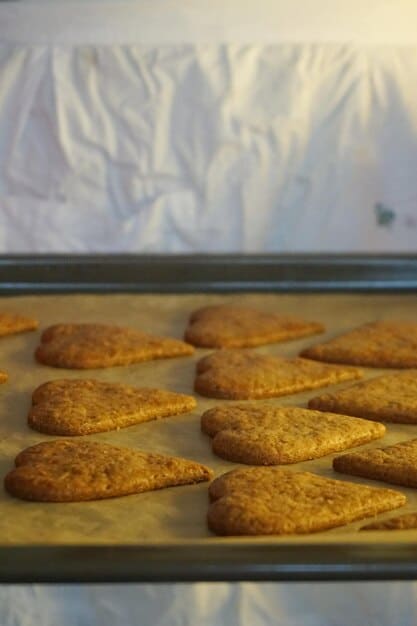
2. Mini Whole Wheat Pizzas
Who doesn’t love pizza? These mini whole wheat pizzas are a fun and nutritious meal option that you can quickly assemble. Use whole wheat English muffins as the base and top with tomato sauce, low-fat mozzarella cheese, and your toddler’s favorite vegetables.
Bake until the cheese is melted and bubbly. These mini pizzas are perfect for little hands and can be stored in the refrigerator for a couple of days.
3. Berry Yogurt Parfaits
For a quick and healthy breakfast or snack, berry yogurt parfaits are an excellent choice. Layer Greek yogurt with mixed berries and a sprinkle of granola in small containers. These parfaits are packed with protein, antioxidants, and fiber.
Prepare several parfaits at once and store them in the fridge for an easy grab-and-go option. It is important to use yogurts that are sugar-free or low in sugar.
- Prep Time: Under 10 minutes
- Ingredients: Greek yogurt, mixed berries, granola
- Storage: Refrigerate for up to two days
- Nutritional Benefits: Protein, antioxidants, fiber
4. Cheesy Broccoli Bites
Getting toddlers to eat their vegetables can be challenging, but these cheesy broccoli bites make it a little easier. Steam broccoli florets until tender, then chop them finely and mix with shredded cheese, eggs, and breadcrumbs.
Form the mixture into small bites and bake until golden brown. These bites are not only delicious but also a great source of vitamins and calcium.
5. Sweet Potato & Black Bean Quesadillas
Quesadillas are incredibly versatile and quick to make. For a toddler-friendly version, mash cooked sweet potato with black beans and a little cheese. Spread the mixture between two whole wheat tortillas and cook in a skillet until golden brown and the cheese is melted.
Cut the quesadillas into wedges for easy handling. These quesadillas are packed with fiber, vitamins, and protein.
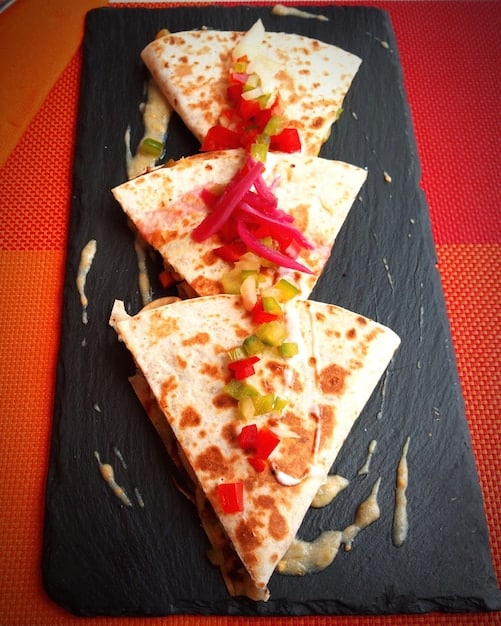
6. Hummus & Veggie Pinwheels
Pinwheels are not only visually appealing but also a fun way to get toddlers to eat their vegetables. Spread hummus on whole wheat tortillas and top with thinly sliced cucumbers, carrots, and bell peppers.
Roll up the tortillas tightly and slice into pinwheels. These pinwheels are a great source of protein, fiber, and vitamins.
- Prep Time: Under 15 minutes
- Ingredients: Hummus, whole wheat tortillas, cucumbers, carrots, bell peppers
- Storage: Refrigerate for up to three days
- Nutritional Benefits: Protein, fiber, vitamins
7. Oatmeal Energy Balls
These no-bake energy balls are perfect for a quick and healthy snack. Combine rolled oats with peanut butter (or sunflower seed butter for allergies), honey, and chia seeds. Roll the mixture into small balls and refrigerate until firm.
These energy balls are packed with fiber, protein, and healthy fats, providing a sustained energy boost for your little one.
By incorporating these seven recipes into your meal prep routine, you can provide your toddler with nutritious and delicious meals in under 30 minutes. These quick and easy options can help you save time while ensuring your child gets the essential nutrients they need for healthy growth and development.
Tips for Successful Toddler Meal Prep
Successfully prepping meals for toddlers involves more than just quick recipes. Here are some invaluable tips to streamline the process and make it a positive experience for both you and your child. A little planning, and these suggestions, make meal prep for toddlers easy.
From involving your toddler in age-appropriate tasks to safely storing prepared meals, these considerations will empower you to set up a system that promotes nutritious eating habits and keeps things running smoothly.
Plan Your Meals
The key to efficient meal prep is planning. At the beginning of each week, sit down and map out your toddler’s meals. Consider their preferences, dietary needs, and any allergies they may have. Creating a weekly meal plan not only saves time but also ensures a balanced and varied diet.
Start by making a list of your toddler’s favorite foods. Then, identify recipes that incorporate those foods and are quick to prepare. Don’t be afraid to experiment with new flavors and textures, but always have a few familiar staples on hand.
Involve Your Toddler
Involving your toddler in the meal prep process can make them more excited about trying new foods. Assign them age-appropriate tasks, such as washing vegetables, stirring ingredients, or helping to set the table.
When toddlers participate in meal preparation, they are more likely to develop a positive relationship with food and are more willing to taste what they helped create. Plus, it’s a great way to teach them about healthy eating habits from a young age.
Batch Cooking
Batch cooking involves preparing large quantities of a recipe at once and then portioning it out for future meals. This is a fantastic time-saving strategy for meal prep.
Choose recipes that freeze well, such as soups, stews, casseroles, or baked goods. Once cooked, divide the food into individual portions and store them in freezer-safe containers. Make sure to label each container with the date and contents.
- Choose the right recipes: Soups, stews, and baked goods freeze well.
- Portion control: Divide food into individual portions before freezing.
- Label everything: Always label containers with the date and contents.
- Proper storage: Use freezer-safe containers to prevent freezer burn.
Invest in the Right Equipment
Having the right kitchen equipment can significantly speed up meal prep. A food processor is invaluable for quickly chopping vegetables, while a high-speed blender is perfect for making smoothies and purees. You may also want to invest in a set of airtight containers for storing prepared meals.
Other useful gadgets include a vegetable peeler, a set of measuring cups and spoons, and a good quality knife. Having everything you need within easy reach will make meal prep more efficient and enjoyable.
Store Food Safely
Proper food storage is essential for maintaining the quality and safety of prepared meals. Always cool food completely before refrigerating or freezing it. Use airtight containers to prevent bacterial growth and freezer burn.
Be sure to label each container with the date and contents, so you can easily keep track of what’s inside. Follow safe food handling practices to minimize the risk of foodborne illness.
- Cool down food: Always cool down food before storing.
- Airtight containers: Use airtight containers to prevent bacterial growth.
- Label everything: Label containers with the date and contents for easy identification.
- Safe practices: Follow safe food handling practices to minimize risks.
Take time to organize these tips. Start by investing in the right equipment. With practice, these strategies will streamline your meal prep efforts.
Addressing Picky Eating Habits
Dealing with picky eating is a common challenge for parents of toddlers. It’s important to approach this issue with patience and creativity. Introducing new foods gradually and offering familiar foods alongside new ones can encourage your toddler to try different things.
Making mealtimes enjoyable and stress-free is also crucial. Avoid pressuring your child to eat and instead focus on creating a positive and relaxed atmosphere. Over time, these strategies can help expand your toddler’s palate and reduce picky eating habits.
Introduce New Foods Gradually
It’s often said that the key to expanding a picky eater’s palate is to introduce new foods gradually. Start by offering small portions of a new food alongside something familiar. Don’t be discouraged if your toddler rejects the new food at first. It can take multiple exposures before a child accepts a new taste or texture.
Try serving the same food in different ways. For example, if your toddler doesn’t like raw carrots, try roasting them or serving them with a dip. Consistency and persistence are essential in this process.
Offer Familiar Foods Alongside New Ones
When you introduce a new food, always include something familiar that your toddler already enjoys. This can make the new food seem less intimidating and more approachable. For instance, if you’re introducing broccoli, serve it with a side of mashed potatoes or a favorite fruit.
Offering a variety of options can also empower your toddler to make their own choices, which can reduce mealtime resistance. Just be sure to include at least one item that you know they will eat.
Make Mealtimes Enjoyable and Stress-Free
Creating a positive and relaxed atmosphere during mealtimes is crucial for encouraging healthy eating habits. Avoid using mealtime as an opportunity to discipline or pressure your child. Instead, focus on creating a pleasant environment where everyone can enjoy their food.
Turn off the TV and put away electronic devices to minimize distractions. Engage in conversation with your toddler about their day or other topics they find interesting. The goal is to make mealtimes a positive and enjoyable experience.
- Avoid pressure: Don’t force them to eat.
- Engage in conversation: Talk about topics they find interesting.
- Positive atmosphere: Create a pleasant environment where they can enjoy their food.
- Minimize distractions: Turn off the TV and put away electronic devices.
Get Creative with Presentation
The way food is presented can have a significant impact on whether a toddler is willing to try it. Get creative with your presentation to make meals more appealing. Use cookie cutters to create fun shapes out of sandwiches or vegetables. Arrange food in colorful patterns on the plate.
You may also want to try serving meals in muffin tins or small bowls. These smaller portions can be less overwhelming for picky eaters. Remember, the goal is to make food look as enticing as possible.
These considerations will empower you to set up a system that promotes nutritious eating habits and keeps things running smoothly. Meal prep for toddlers doesn’t have to be hard! With a few key insights, picky eating habits can be managed.
| Key Point | Brief Description |
|---|---|
| ⏱️ Quick Recipes | 7 recipes for toddlers under 30 minutes. |
| 🥦 Healthy Options | Nutrient-packed meals for toddler growth. |
| 🧑🍳 Meal Prep Tips | Plan, batch cook, and store food safely. |
| 😋 Picky Eaters | Introduce new foods gradually and make it stress-free. |
Frequently Asked Questions About Meal Prep for Toddlers
▼
Most prepared toddler meals can be safely stored in the refrigerator for up to three days. Ensure that you store them in airtight containers to prevent bacterial contamination and to maintain freshness.
▼
Yes, you can freeze toddler meals for up to two months. Use freezer-safe containers and label each container with the date. Thaw the meals in the refrigerator overnight before reheating.
▼
Reheat meals thoroughly to an internal temperature of 165°F (74°C). You can use a microwave, oven, or stovetop. Ensure the meal is evenly heated to prevent hot spots that could burn your child.
▼
Involve your toddler in age-appropriate tasks, such as washing vegetables or stirring ingredients. Use fun cookie cutters to shape the food and create visually appealing meals. Turn on some music and make it a family activity.
▼
Don’t force your child to eat. Offer the meal again at another time. Provide a variety of options and allow your child to choose what they want to eat. Try serving the meal with a favorite side dish or condiment.
Conclusion
Incorporating these meal prep strategies and recipes into your daily routine will not only save you time and reduce stress but will also ensure that your toddler receives nutritious, delicious meals. By planning, involving your child, and addressing picky eating habits with patience and creativity, you can make mealtimes a positive and enjoyable experience for the whole family.
